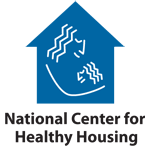|
|
Green Living
We do not strictly control Google ad content. If you believe any Google ad is inappropriate, please email us directly here.
Sort results by: Date Added | Alphabetically - High-efficiency washing machines could save you $550 in water and energy annually.
- Chiras is an internationally known author, educator, consultant, and founder and director of The Evergreen Institute.
- The homeowner gains a finished, insulated
basement, a healthy house, and an estimated
energy savings of a whopping 81%.
- Humidity refers to the water-vapor content of air. Because there is always some moisture in the air, it can be difficult to think of humidity as a pollutant. Yet, if your indoor air contains high levels of water vapor, it can cause major problems.
- Most dry-cleaning chemicals pose health hazards and are often intolerable to the chemically sensitive and to some allergic and asthmatic people.
- In a typical forced-air system with leaky ducts and an inefficient filter, the ducts are usually contaminated with a wide variety of particulates and microorganisms—all directly exposed to the air being breathed by the occupants.
- Dust mites and bed bugs are very different organisms and impact humans in different ways.
- Three viewpoints of designing a healthy building include: the importance of sustainable development, the role of occupants for ensuring indoor air quality, and ongoing developments related to indoor finishes with low chemical emissions and good fungal resistance.
- Electronics, especially appliances, are some of the heaviest users of energy, and often consume energy even when they're not in use. Learn which electronics are the biggest offenders.
- An examination of 13 common myths reveals that they should be treated with some healthy skepticism.
- EPA's Energy Star program now addresses indoor air quality (IAQ). Here is a summary of requirements you can use to improve your home's IAQ.
- Biomonitoring, the measurement of chemicals in blood, urine, and other tissues or fluids, is becoming an increasingly common tool in the study of human exposure to environmental chemicals; the problem is, it's hard to connect with health outcomes (abstract only).
- Revealing inert ingredients will help consumers make informed decisions and will better protect public health and the environment.
- EPA allows safer products to carry the Design for the Environment (DfE) label. This mark allows consumers to quickly identify and choose products that can help protect the environment and are safer for families.
- There are five general principles of cleaning up - or remediating - mold.
- Don't just throw away your used printer cartridges. Here are five ways you can dispose of your printer cartridges, keep them out of the landfill and reap benefits as well.
- A whole-house approach still holds true for a sometimes-forgotten space.
- Fluorescent lamps with improved performance and design features are now available.
- Expert blogger shares insights on Icynene open-cell spray foam insulation.
- This study reveals that a considerable percentage of the U.S. population reports adverse health effects or irritation from fragranced products, (abstract only).
We do not strictly control Google ad content. If you believe any Google ad is inappropriate, please email us directly here.



Information provided by The Healthy House Institute is designed to support,
not to replace the relationship between patient/physician or other qualified
healthcare provider.
Education Partners
Ads, ad links, products and content on this page are not necessarily endorsed by these organizations.
|

We do not strictly control Google ad content. If you believe any Google ad is inappropriate, please email us directly here.
|








